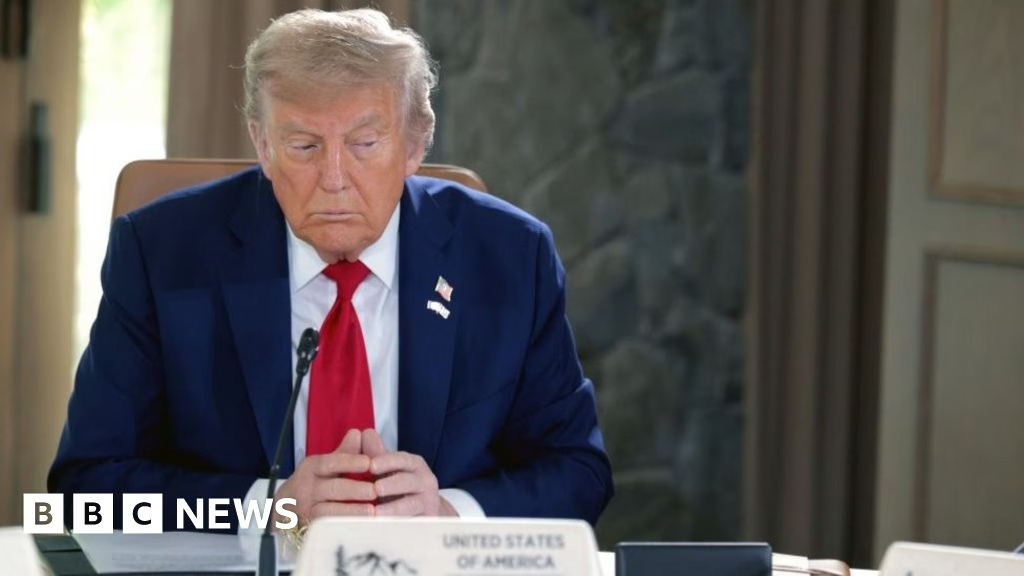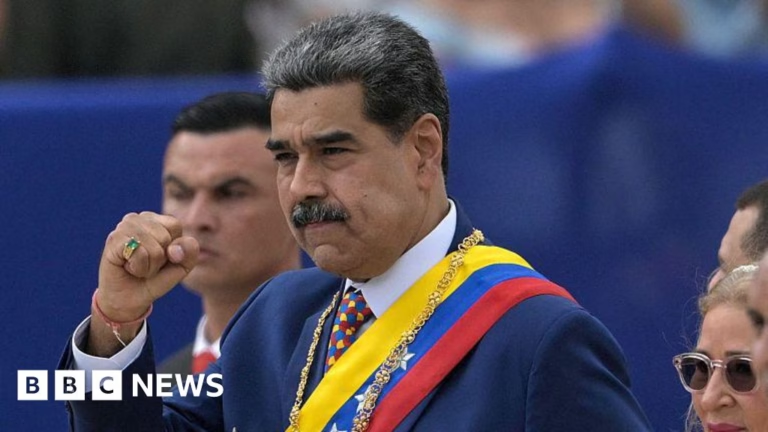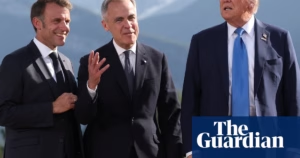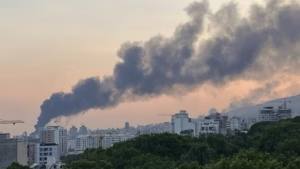
His ambiguity has added to the sense of uncertainty as the fighting itself escalates.
Meanwhile, the Israeli prime minister, Benjamin Netanyahu, has said the attacks were “fully coordinated” with the US.
So what factors are weighing on Trump, and, crucially, what are his options now?
1. Bowing to Netanyahu pressure and escalating
As Israeli missiles hit Tehran on Thursday, Trump threatened Iran’s leaders with “even more brutal” attacks from his Israeli ally armed with American bombs.
We know Trump’s ultimate objective. He says, like Netanyahu, that Iran can’t have a nuclear bomb. Crucially, he has said his preferred option (unlike Netanyahu) is via a deal between the US and Iran (this route also reflects his self-described image as a world-class dealmaker).
But he has equivocated over how to get there, sometimes leaning into the threat of force, other times pushing the diplomacy. Last week, he even said in the same breath that an Israeli attack on Iran would help a deal or it would “blow it”.
His unpredictability is sometimes portrayed by his supporters after the fact as strategic – the so-called “madman” theory of foreign relations. This theory is one that has previously been used to describe Trump’s negotiating tactics and suggests that deliberate uncertainty or unpredictability about escalation works to coerce adversaries (or even allies in Trump’s case) into complying. It was famously attributed to some of the Cold War practices of President Richard Nixon.
Some of Trump’s advisers and supporters back the “maximum pressure” side of the madman theory when it comes to his approach to Iran. They think the threats will, in the end, prevail because, they argue, Iran is not serious about negotiating (even though, in 2015, the country signed an Obama-led nuclear deal that Trump later pulled out of).

Netanyahu has applied constant pressure on Trump to go down the military not diplomatic path, and the US president – despite his oft-stated desire to win the Nobel Peace Prize – may in the end see a need to deliver on his more belligerent threats to Tehran’s leadership
Israel may also push harder behind the scenes for American involvement to, as it sees it, to finish the job. The US has bunker buster bombs Israel believes can destroy Iran’s underground uranium enrichment site at Fordow.
As the fighting escalates, so does the pressure on Trump from the hawkish camp of Republicans in Congress who have long called for regime change in Iran.
Trump will also see the argument that it could force the Iranians into negotiating with him with a now weaker hand. But the fact remains that the Iranians already were at that table, as a sixth round of talks due with Trump’s envoy Steve Witkoff had been planned in Oman on Sunday.
The talks are now abandoned.
2. The middle ground – holding the course
So far, Trump has reiterated that the US is not involved in Israel’s attacks.
Escalation comes with significant and potentially legacy-defining risks for Trump. American naval destroyers and ground-based missile batteries are already helping in Israel’s defence against the Iranian retaliation.
Some of Trump’s advisers at the National Security Council are likely to be cautioning against him doing anything that could add to the intensity of Israel’s attacks on Iran in the immediate days, especially with some Iranian missiles breaching Israeli-US defences to deadly effect.
Netanyahu is now arguing that targeting Iran’s Supreme Leader Ali Khamenei would end, not escalate, the conflict.
But an anonymous US official briefed to some news outlets at the weekend that Trump made clear he was against such a move.









